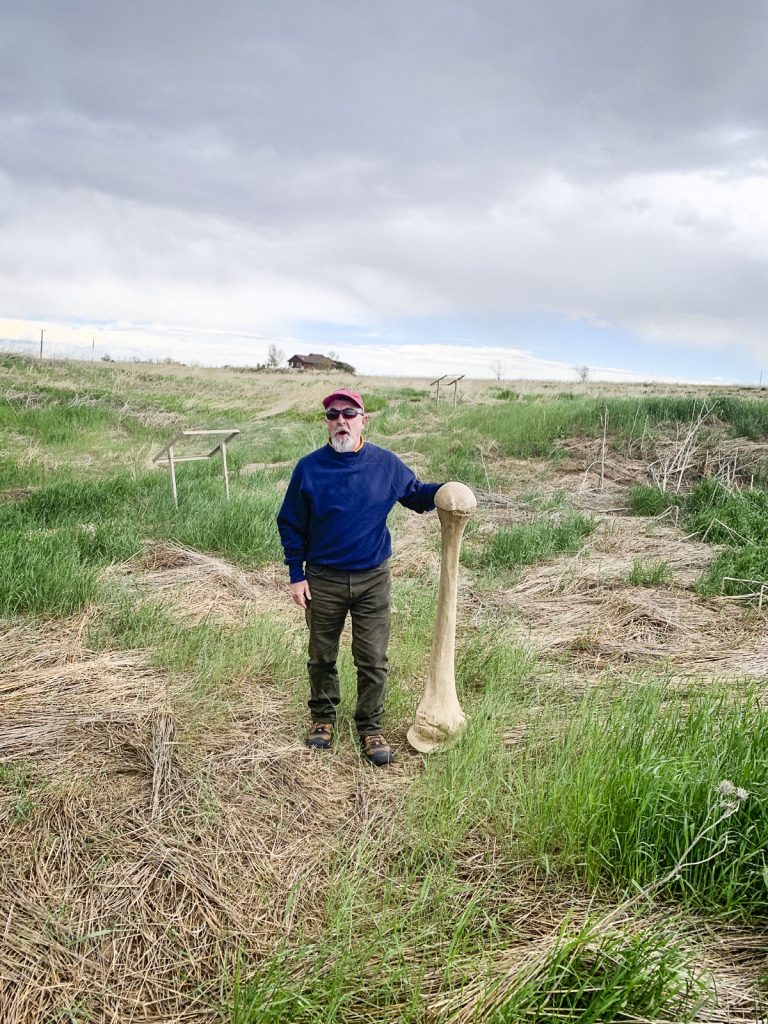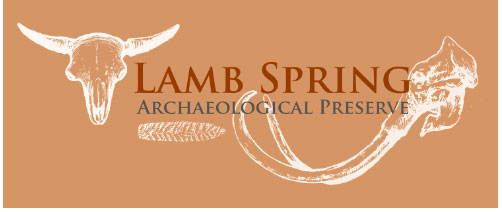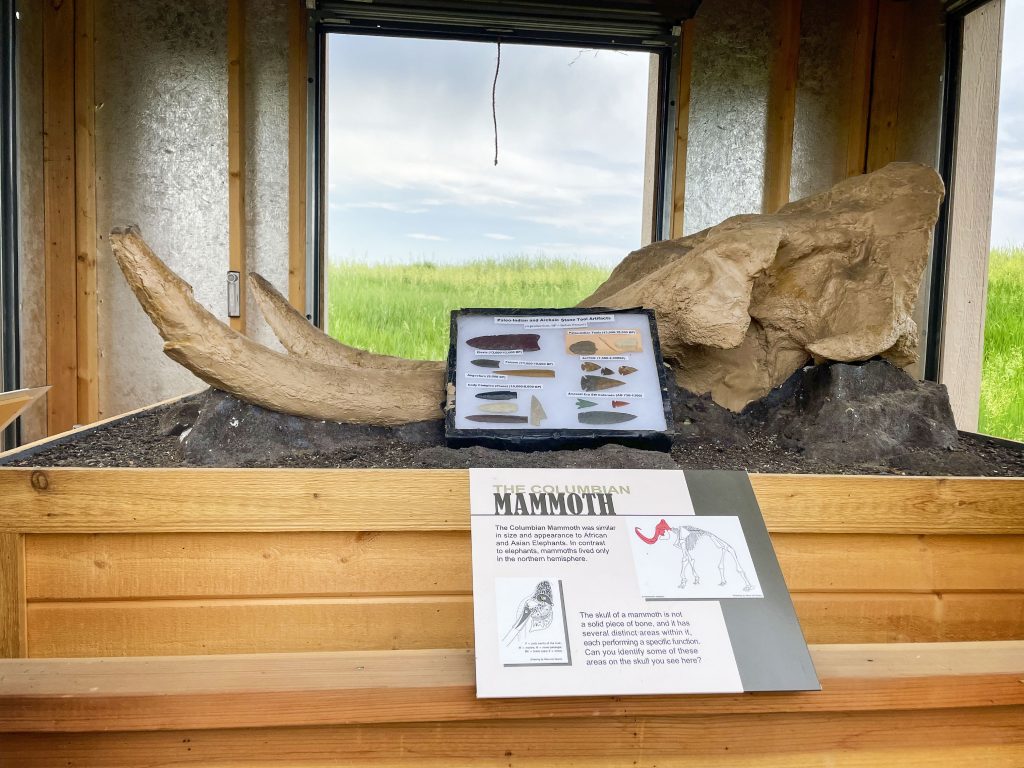Discover the Ice Age in Douglas County

Cameron Randolph stands at the Lamb Spring Archaeological Preserve holding the cast of an adult Columbian mammoth’s leg bone from the Pleistocene epoch or colloquially, the Ice Age.
 In a little shed in the middle of 35 acres in northwest Douglas County, sit plaster casts of a skull and femur. And not just any casts: but a juvenile Columbian mammoth’s skull and an adult Columbian mammoth’s leg bone from the Ice Age. The land and tours are managed by the Lamb Spring Archaeological Preserve (LSAP).
In a little shed in the middle of 35 acres in northwest Douglas County, sit plaster casts of a skull and femur. And not just any casts: but a juvenile Columbian mammoth’s skull and an adult Columbian mammoth’s leg bone from the Ice Age. The land and tours are managed by the Lamb Spring Archaeological Preserve (LSAP).
Cameron Randolph is a retired teacher and currently a board member and tour guide for LSAP. If his name sounds familiar, it is because he helped launch Rocky Heights Middle School in 2003 and retired as a science/technology teacher four years ago.
In his retirement, Cameron splits his time between his home state of Nebraska and Colorado so he can guide and educate the public about the megafauna (large mammals) that were discovered at LSAP more than 60 years ago.
In 1960, Charles Lamb was widening his stock pond for cattle.
“As the story is told, Lamb ran into something, a bone,” explained Cameron. Lamb called the U.S. Geological Survey who came out and identified it as a Columbian mammoth from the Pleistocene epoch. The Pleistocene is known colloquially as the Ice Age and is estimated to have lasted from 2.58 million to 11,700 years ago.
Over the following decades, the Smithsonian Institution, Denver Museum of Nature & Science (DMNS) and the University of Colorado Boulder excavated the property and found the remains of more than 30 Columbian mammoths, prehistoric horses, camelids (llamas), sloths, bison and wolves. Projectile points and a knife were also uncovered, indicating that Native Americans were hunting and butchering their prey at LSAP more than 8,000 years ago.
“The bison they would have been hunting would have been the bison antiquus,” said Cameron. “They would have been 25% bigger than today and we have evidence of that at the site.”
Since the bones found at LSAP were not fossilized, they have been “backfilled and reburied” for preservation. But some of the original findings, including the mammoth skull and femur, were crated and taken away for further research and remain today at DMNS, the Smithsonian and the Douglas County Repository. There are large areas of LSAP that remain unexplored and unexcavated.
In 2006, LSAP became an established nonprofit, and everyone involved is a volunteer. The ultimate goal of the organization is to build a small museum and educational facility on the property to display more of the findings.
To register for the monthly tour, visit lambspring.org. LSAP is a bit tricky to find (it is about five miles north of Roxborough State Park); therefore, follow directions on the map that is shared after registration. The tours are free of charge and the next dates are July 6, August 3, September 7 and October 5 at 9 a.m.

In a little shed in the middle of 35 acres in northwest Douglas County, sits a plaster cast of a skull and femur of a juvenile Columbian mammoth’s skull and an adult Columbian mammoth’s leg bone from the Ice Age.
Article and photo by Hollen Wheeler; photo courtesy of Cameron Randolph